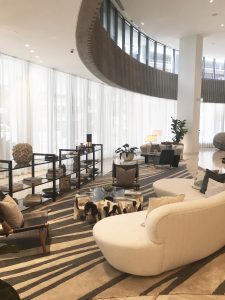New Zealand–based Bossley Architects, led by founder Pete Bossley, offers a range of architectural and interior design services. The award-winning firm is best known for its work in galleries, museum, residential, and retail spaces, but Bossley’s public projects showcase his practical approach to making architecture for the greater good of society.
Bossley believes, at least to a degree, in the early twentieth-century modernist’s notion that good architecture can lead to a better society. And his social interests for architecture are not merely theoretical: they led to his very practical work with the Fred Hollows Foundation (FHF), named after the New Zealand eye surgeon who created low-cost surgery for developing countries. Bossley designed what the organization has called “innovative, modular eye clinics for the Pacific Islands.” Although the FHF is still trying to fund the first buildings, the design is a promising advancement of the organization’s goals.
The Pacific Islands is home to remote communities where many locals have no permanent eye doctor or clinic. The FHF trains eye-care workers from Pacific countries at an institute in Suva. Once these workers return to their homes, where tens of thousands have become blind, mostly due to cataracts, they find inefficient, crowded workplaces.
Bossley has created a system where clinicswhich include surgery spaces and clinical screening rooms—can be flat-packed, easily assembled without heavy machinery, and the number of rooms can change with site size.
These eco-friendly, modular buildings can be transported to various locations in need of “sight-restoring surgery.” They are naturally ventilated, leading not only to low energy consumption but also to low operating costs—a necessity for the poor regions in which they will be built.
Another public project Bossley has on the boards is for the Dutch Connection Museum Trust. The long-term project will include a public library, art gallery, cafe, national Dutch museum complex, and other community-centered spaces, known as Te Awahou Nieuwe Stroom, to be sited on a Foxton waterfront site.
In addition to the firm’s public and social projects, it continues to build award-winning houses, which also formed most of Bossley’s early commissions. The Brown Vujcich House on a narrow urban site uses a translucent-glass-glazed entry, providing soft light and privacy inside. That entry is reached by crossing a moat over plantings—an added level of privacy. The entry’s vertical cedar screen, materials like cedar shiplap and double-skin bagged brick and the interior’s playful colors all reflect the clients’ interest in 1950s architecture and fine and decorative arts. The project received four awards: in 2010, the Registered Master Builders Auckland Region Gold Award and National House of the Year Gold Reserve Award, and in 2011, the New Zealand Institute of Architects (NZIA) Auckland Residential Architectural Award and Auckland Resene Color Award.
Bossley has received numerous NZIA awards since the 1980s, as well as honors from other organizations. Most recently and significantly, he was awarded a 2012 New Zealand Institute of Architects (NZIA) Gold Medal; the organization called him an “architectural adventurer” when recognizing his career accomplishments.
Bossley graduated from the University of Auckland’s School of Architecture in the 1970s, and traveled an interesting journey to find his niche. At various points in his life he trained to be a lawyer and a book publisher; he became involved in anti-nuclear protests during the Vietnam War; and he drove a ditch digger for five months, until he enrolled in a draughtsmanship course. After five years, Bossley earned a certificate in draughting, and then, of course, his bachelor of architecture.
Other public career accomplishments include the expansion of the Voyager Maritime Museum in Auckland (2009) and Te Papa Tongarewa (1997) Museum of New Zealand in Wellington (1997), which has been called New Zealand’s most significant building of the late twentieth century. Bossley has lectured and exhibited internationally and within New Zealand, has been published in books and magazines, and has taught architectural design at the Unitec Architecture and Landscape School for more than two decades.








